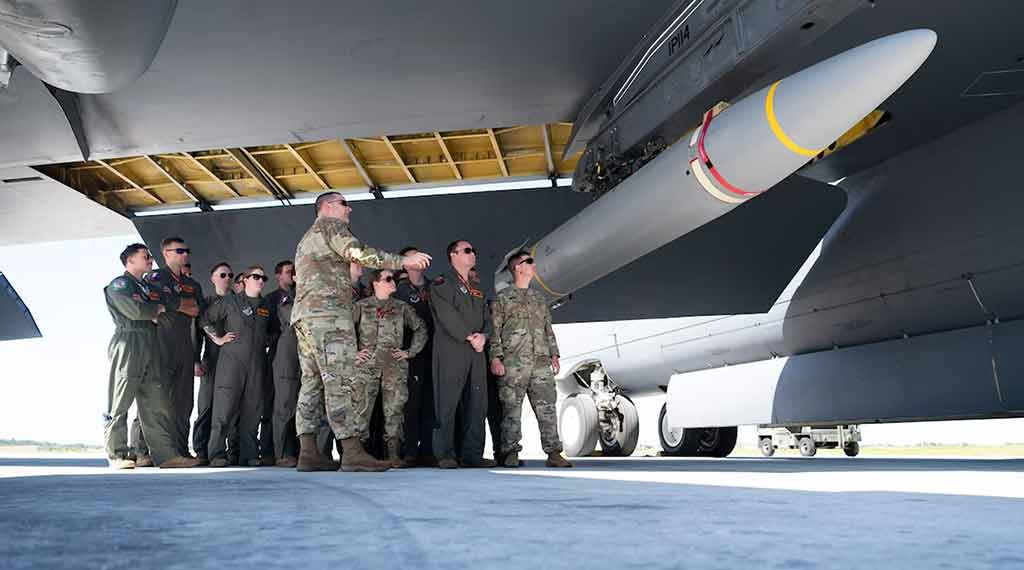Guam-based airmen carry out Indo-Pacific’s first hypersonic weapons training

Editor’s Note: This piece by Seth Robson features quotes from CSP Senior Fellow, Grant Newhsam.
Airmen on Guam trained last week on a hypersonic weapon the Air Force has kept under wraps for nearly a year.
Photographs of airmen checking out what appears to be an AGM-183 Air-launched Rapid Response Weapon were released on Andersen Air Force Base’s website Feb. 29. It was mounted beneath a B-52H Stratofortress bomber.
The AGM-183 is a conventional, rocket-powered hypersonic gliding missile with a warhead of “kinetic energy” projectiles rather than explosives, according to a fiscal 2021 Air Force report.
…
The U.S. military is scrambling to defend against hypersonics, retired Marine colonel Grant Newsham, a senior researcher with the Japan Forum for Strategic Studies in Tokyo, said Monday.
He described the U.S. lag in hypersonic weapons as a “scandal.”
“The most senior U.S. leaders in the Pacific and elsewhere were warned at least in the mid-2010s of [Chinese] hypersonic development and the specific damage they could cause to U.S. warfighting capabilities in the Asia-Pacific and beyond,” he said in an email to Stars and Stripes.
Once operational, hypersonic missiles will give U.S. forces weapons that are difficult to intercept and that could be used to strike Chinese targets in a contingency, Newsham said. “This increases the chance of a successful strike — and that’s obviously important — if not essential,” he said.
“You want to hit what you’re aiming at and without the enemy being able to intercept or disrupt your projectile. Hypersonic weapons can be particularly useful against high-value targets — such as command and control nodes — and also key infrastructure.”
In the event of a Chinese attack on Taiwan, hypersonic weapons could strike targets on the Chinese mainland, such as command and control centers, ports and airfields, power plants and logistics hubs, Newsham said.
- Communist China Telegraphs Its Punches - December 30, 2025
- Sometimes One’s Image of a Country gets ‘fixed in time’ and left behind by reality - December 22, 2025
- Taiwan confirms $11 billion U.S. weapons sale; China condemns arms deal as ‘dangerous’ - December 18, 2025
